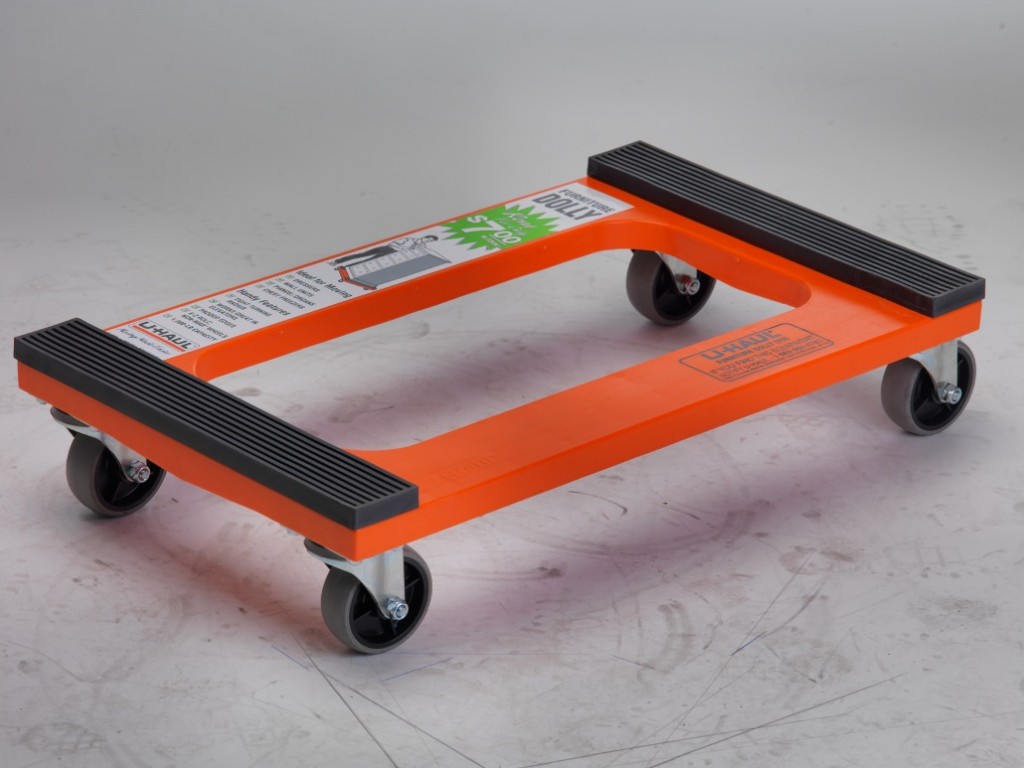Imagine The Walking Dead started in 50 years from now. The way things are going now, picture this scenario:
>A survivor is walking down a lonesome road.
>They arive at a small resort and there’s a car covered in dust and dirt in the parking lot.
>They approach the car and check whether it still has some bio fuel left in the tank.
>Still plenty.
>They look around spotting a decayed body close by.
>They search the body and are lucky to find a ‘keyless’ key belonging to the car.
>There are no door handles and the battery inside the key corroded away.
>They break the glass and open the door from the inside.
>Finally inside, there’s still no way to start the engine without the key.
>They have an idea.
>The digital wrist watch on the body should have the same battery as the key.
>After a bit of tinkering with some tools they get the key working again.
>They press the ignition button.
>The displays light up but the engine remains quiet.
>The displays show error messages:
ERROR CODE: ND47089
Tire pressure sensor subscription expired
Please schuedule service or enter payment information
Engine start failed
>MFW
>Survivor finds car
>plenty fuel
>pry open gas cap
>siphon
>go back home and run generator.
I knew hauling around a random jerrycan would pay of some day
shit, this thing is heavy when it’s full> Its electric
Boogie woogie woogie
Trigra masapara tubi top top tubi
For the longest time I through those were the words. I barely spoke any English then. The 80’s and 90’s are a slight blur. Please don’t send me to Guantanamo.
collect batteries and add it to the solar/battery bank back at base.
What i learned from doomsday preppers is that you need guns and food and shelter. Apparently it doesn’t matter that you’re an unfit fuck that can’t walk 20m without a car.
Or that you wouldn’t last a year without your statin.
They’ll be dragging classic cars out of people’s garages and sheds.
If you were going to be realistic about this, it would be old, mechanical injection diesel engines still going long after the apocalypse. And bicycles, of course.
What will be considered a classic car in 50 years? A 2017 Toyota Camry Station Wagon?
If you are being realistic, your best shot is probably EVs and having solar panels, those can maybe last about 20 years.
Diesel and Petrol will go bad in a year.
Either way you are on a finite resource, so the actual best bet is having horses
You think you’re going to drive anywhere 2 years after the apocalypse?
After a winter or two, between abandoned vehicles and lack of maintenance, the roads are going to be impossible to navigate for any distance that you couldn’t just walk or bike.
Depends where you are, in my neck of the woods there are plenty of roads that have been largely abandoned for 20 plus years and are still drivable. Not a comfy ride but still a drive none the less.
Most road damage comes from being driven on so assuming it doesn’t get undermined most would still be usable even ten years after abandonment, not factoring in getting buried or flooded.
It depends, because if the car breaks down, you will need parts to fix it. Hopefully parts you can get off another car of similar make. Also older cars can use universal parts, newer cars are more heavily proprietary, so electric may not be the way to go for longterm use.
Diesel lasts longer then a year. If you can get a commune going, you can grow diesel fuel from seed oil, but only with older diesel. Not that you’d want to direct too much food resources to transportation, but if you have enough farm land, diesel tractors are much more common then electric and easier to work on.
You can also run modified gas engines to run off of Wood Gas and wood could be scavenged from most places. Probably the best option for any fast scouting operations, although you would need to let the system idle. The start up process takes some time.
Can confirm, my dad still uses the same tractor and diesel barrels his grandpa did. They are all from the 70s.
How’d your grandpa get a multi-decade hoard of diesel in the 70s?
He got a used tractor and 2 normal-sized unopened barrels of diesel, both manufactured in the 1970s, during the early 1990s privatization of Czechoslovak collective farms. We don’t use the tractor very much (it overheats after about an hour but that’s still more than enough time to plow our little field or haul a wagon) so one barrel is still more than half full. It takes 10+ years to empty a tank.
I’d bet on an old diesel running on vegetable oil outlasting an EV.
deleted by creator
Bikes are the apocalypse ideal vehicle. They are immensely underrated on apocalyptic media.
Fuel I need to constantly scavenger? No thanks.
Noise that would attract the zombies? No thanks.
The highway is collapsed and my RV cannot go through? No thanks.
A bike would get you quite good through many apocalyptic scenarios.
Or just use Heelys like a normal person.
Omg just imagine the war boys from fury road gracefully gliding down the road screaming ‘witness me’ 😂
Mad Max the musical now on Broadway
You should read the book “Wolf and Iron”
Lol check out modern bikes with electric shifters.
Man those electric stuntbikes with a screen are hot asf. But they are dangerous.
All this fuel talk when IRL you can’t drive anywhere if fuel in the tank is older than several weeks.
It takes much longer than that for gas to go bad… I have left untreated gas in lawnmowers, motorcycles, boats etc for entire off-seasons (plus a couple months on top of that) and the gas still goes boom just fine. I wouldn’t race with it… And I’m sure it would test at a lower octane level, but it will still run an engine
Except most modern cars have turbo and direct injections and are very sensitive to gas/diesel quality. Even your diesel car will break down on an aged diesel. If the tank is not full, it will have degraded in contact with air, and if it stayed too long, it may have absorbed too much humidity and will ruin your advanced diesel engine.
Correct, I have let gas sit for over a year and it still works fine in carbureted engines like my mower and motorcycle. I just pick up the gas can and swirl it around vigorously to stir up the parts that might have settled. Also this is only non-ethanol gas being stored, probably would be worse with the ~10% ethanol blends that are standard.
I think modern apocalypse movies should show someone grabbing solar panels off apartment balconies to recharge an abandoned electric car.
Not even close to enough energy to be practical in the real world, but close enough for movie logic.
Kinda wrong.
You can’t get enough solar energy to directly drive a car any practical distance, but you aren’t actually driving your car most of the time. When you look at weekly energy requirements, most drivers would be able to accumulate enough energy for all of their driving with just a few decent panels. You would need a battery to take advantage of this, or only drive at night.
Also, check out the solar cannonball run. A guy made a mobile rig of like 40 flexible panels and drove a Model three across the US using only solar charging.
Just gonna leave this here:
Oh boy.
Alrighty not even gonna click that link, here is why…
Aptera claims to get about 40 miles of range per day with their full solar package and ideal conditions. Which is fantastic! But, it’s not the solar technology that makes that car viable, its the high efficiency of their vehicle. If we assume 40 miles per day, 12 hours of sun, you could hypothetically directly drive the Aptera with solar at a blistering …3.3mph. To put it simply, unless solar panels get an order of magnitude more efficient, we are not going to get a direct solar driven vehicle. It will always be solar plus a big ass battery.
I’ve been watching Aptera closely since 2015, and I already have a reservation for one. That’s the other reason I don’t have to click that link. I get updates straight into my feed and I’ve gone over their documents multiple times forward and back.
Correct - not direct drive, but seems like that’s not really a necessary goal for most of us. If you really need to be able to just drive non stop all day while the sun is out, I don’t think that’s been solved yet (would still have to stop for gas even).
Hence why I said “Kinda Wrong” .
Practically any solar panel can fully recharge an EV, it’s just a matter of how long it’s going to take. Sure there are some battery losses, yada yada, but a single 100W panel would charge up an EV in a few months.
practical
If the car is tied to a location that is already safe and secure in a post apocalyptic setting, then sure. But a post apocalyptic car is really only needed to haul stuff around or as protection against things outside the vehicle, and depending on the apocalypse you likely need to stay mobile, reinforce a secure location, or relocate to somewhere remote away from urban areas. Transporting the panels to a remote location will take time and effort, and if you need to be mobile you won’t have time to charge.
Now if you had a rural home with solar panels on the roof and the location was secure an electric car would serve you well until something mechanical or the batteries failed and if you didn’t need to travel far you could use it regularly too.
How about pulling the batteries from a remote control and using them to start an electric car? After all, it’s electricity and we all know batteries don’t go bad after sitting idle for 10 years, right? Movie logic. It just works.
Electric vehicles can charge from a standard outlet. I would imagine if you gather enough of those panels that actually plug into a standard outlet, you could charge a car (though slowly). Your average EV can put on about 10 miles to its “tank” every hour of charging at 120 volts. I don’t know what the amps of those panels are though.
The alternative would be if the protagonist found a home with solar panels and backup batteries. These exist today, and are becoming more common. I don’t know if sodium ion backup batteries have a longer life than LFP or lithium ion.
It would be easy to find enough solar panels to charge an electric vehicle in most sunny areas, though it would probably be easier to just look for a large enough existing install and skip all the DIY. (Just look for the shiniest roof.)
But I think the real problem is in the EV itself. Batteries self-discharge and chemically degrade over time, so unless the apocalypse was recent, a lot of EVs you find might have damaged batteries, especially if fully discharged to begin with.
You could cannibalize one or more EVs to cobble together enough good cells to get past the safety cutoffs, but it would take a while and you would need to be careful since internal voltage in EVs tends to be high (like 400-800 volts).
TLDR: if this is a movie depiction, definitely use a montage.
In a real apocalypse scenario, those BEVs would get scavenged to create electric
bikesgenerators, grain mills, and water pumps. The original cars are not useful in a world without deliberately car-dependent economic systems, and it’s just not a proper apocalypse if you’ve still got an automotive lobby.Edit: BEV motors 2 big 4 bike
it’s just not a proper apocalypse if you’ve still got an automotive lobby.
Mad Max
Say what you will about the bloodstained vision of senseless carnage and hopeless grief portrayed therein, but at least most wastelanders worked near home.
You would need a lot of panels and days of time to charge to any significant amount of distance. If you set up a solar farm in one location you could use the car for short, regular trips.
You wouldn’t be able to take the panels with you on trips without stopping for several days at a time before traveling another dozen miles or so. Electric vehicles really do pull a massive amount of energy compared to solar cells that the vehicle could haul around.
I think you overestimate the necessity to move long distances in an apocalyptic setting once things have settled. 10miles is actually quite a long distance to move yourself and all your stuff in a day. And since you aren’t expected in the office at 9am, it does not really matter if it takes you 1 hour or 10 days to move somewhere.
10 miles is about 1 hour’s bike ride or 2-3 hours of walking. There’s a reason rural America has a town every 20 miles or so, that’s about half a day’s travel by foot, or one can feasibly go to the next town, do something that takes a while and return back by horse or bike within a day
Once you settle down it isn’t important, but unless you happen to be lucky enough that an urban setting is a good location for a post apocalyptic residence then moving a sizeable distance is a likely need. Any rural area will require moving a few hundred miles at least, and if you can’t take the vehicle with you then it doesn’t serve much of a purpose.
Depends on why things are post apocalyptic of course.
200 watt/panel. 10 panels. 10 hours of charging. 0.2 kW x 10 x 10h = 20 kWh.
Bad mileage because of conductions, so 20 kWh / 100 km.
That means every 10 panels gets you about 100 km / 60 miles per day.
That’s just very rough based on a lot of debatable assumptions of course.
Bigger problem is going to be old fuel. Gasoline degrades over time and becomes less combustible. It also gets gummy in small passages like fuel injectors, especially with ethanol. Wiring insulation gets hard and breaks, wires corrode. Animals intrude and eat wires. Brake and fuel lines rust through, brake hoses swell shut from the inside.
You want a carbureted small block Chevy or Ford. It might still be effort to make it run, but it’ll be far more likely to scrounge up the very generic spare parts and supplies needed.
Tires are another problem. One thing that makes me laugh about the recent Mad Max movies is that all the vehicles have brand-new knobby tires (IIRC the original Mad Max had a lot of properly fucked-up old tires). Since those movies are mostly practical effects, they needed good tires for safety but it’s totally unrealistic for a post-apocalyptic world. In reality they’d use old tires until they exploded - like most of the world today.
Refining gasoline is unlikely enough in these scenarios, but they’d have no way of sourcing the rubber for new tires, let alone the capacity to manufacture them.
You want a carbureted small block Chevy or Ford.
Nope.
Pre 1990 mechanically fuel injected, naturally aspirated diesels. 7.3 or 6.9 IDI, 6.2 Detroit, most Cummins industrial engines.
Diesel lasts significantly longer in storage (2+ years) than volatile gasoline (6mo max). I’ve even seen some non-mixed diesel last 10+ years when stored right.
But the biggest deal is that compression ignition engines can basically run on literally any vaguely flammable liquid substance. You can make biodiesel from a ton of stuff ranging from oil bearing crops to animal fat. They run way longer on oil changes because they don’t dump as much thin gas into their oil. And there are no real consumables like spark plugs, distributor caps/rotors/points.In a post-society situation real fossil fuels or petroleum lubricants or parts will not be available.
Old petrol engines do have something making them worthwhile though - they’re easier to run on wood gas. A gasifier would open options for fuel availability considerably as wood is a lot more likely to be accessible.
An old Lister or Listeriod clone would be king for power generation. Originally made in England and now India because the patents expired, these thing are massive stationary engines popular in rural India for running farm equipment and village generators. They’re also popular in rural Canada for running backup power for their low maintenance and reliability. If you’re setup properly, you can even change the oil while the engine is running.
As an anecdotal note I must mention that my lawnmower works just fine with gasoline that’s over a year old.
I ran my crappy lawmower on crappy gas I filled up 2-3 years ago, and I’ve never done any maintenance on it. I can tell it’s not happy but also I’m sure this $100 lawnmower is a lot simpler than any road vehicle made in the last 50 years
FYI the Navistar DT466 was mechanically injected until 1995.
God, I want one of those. I need to start looking again once my current diesel project is done.
I own a 2003 International school bus with a DT466e. Not mechanical, obviously, but it only has 39K miles on it after a rebuild - built like a brick chicken house, as they say.
I was reading about the wet sleeved cylinders and didn’t understand why that wasn’t more common, but then again, car companies want you to buy a whole new vehicle rather then fix anything. Trunks now a days are way to posh for my taste anyway.
But the biggest deal is that compression ignition engines can basically run on literally any vaguely flammable liquid substance. You can make biodiesel from a ton of stuff ranging from oil bearing crops to animal fat
I’m always annoyed that you don’t see more wood spirit(aka methanol) in the post-apocalypse. They’ll make en ethanol still and then complain about a lack of fuel for their diesel generator as they’re standing next to a forest.
Wait, you can’t make ethanol from wood? I guess that would make sense, because otherwise you’d see a lot more wood liqueurs, I’ve only ever heard of alcohol made from maple syrup, birch, and pine (but that last one was from a rural Austrian town and they aren’t allowed to sell it elsewhere, so it might be a little more poisonous than the others). This is going to be a rabbit hole.
Edit: you can, but it’s not the traditional way of turning wood into alcohol, and an efficient method has only recently been developed.
Just a PSA.
Trees (and plants in general) are made of sugars.
That’s why I was initially surprised, but the og method involved high heat to break down the woodiness of the fibers, and that leads to methanol, not ethanol. You do need sugars for either though, afaik, because the yeast has to eat something either way.
Yeah diesels are always going to be first choice, but in the US at least, there’s just not very many of them that aren’t semi trucks.
You’d be surprised. They’re less common in urban areas, but you can find multiple in any parking lot in more rural areas.
Plenty of 250/2500 and 350/3500 series trucks in the US
Diesel. Still same problems, but diesel will burn a lot more fuel sources, some that can be made far easier than gasoline.
Oh yes, and an old diesel with mechanical injection will be best.
Gas goes bad.
That’s … what I said?
Sorry. It’s a reference to last man on earth and I couldn’t help myself.
Man I miss that show, sorry I didn’t get the reference. It got killed off right in the middle of “shit’s about to go down,” and I will never forgive whoever made that decision.
Even right now. Look at how people have to wait in huge lines to get some gas every time there is a natural disaster, or extreme weather. After a few days, or even hours, it’s mostly gone.
That’s why I always have 120 litres of diesel stored at home in jerrycans plus what ever is left in the tank. If the shit ever hits the fan and I need to get away quick then the gas station is among the last places I want to go fist fighting to.
I rigged up fuel lines so my small diesel generator can run off the heating oil tank. I have about 100 days of nonstop power. If shit looked really bad though, I’d be rationing that fuel on a 50/50 duty cycle or so to keep the fridge chilling while I use power for other things.
What if there’s like a dark cloud allover the earth, how many human body should I plug into my car so I could get toilet paper in the nearest Walmart?
This was a thrill ride to read high wow
well-written, too. this would make a great short film.
edit - i just remembered my favourite quote from Spaceballs: “Fuck! Even in the future nothing works!”
Aside from the battery in the keyfob, what about the car’s battery? If left connected most cars would drain theirs within a month or two. Also, if left discharging/ed like that for too long, the cells can start to sulphate, leading to a bad/non-working cell.
I think in 50 years we hopefully have figured out solid state graphene film batteries.
They did a good job covering that in The Last of Us (season one, episode…4 or 5?): 20ish years post-apocalypse, someone very prepared has kept battery cells in a refrigerator (in acid maybe?) and they have to rebuild the battery before they can use the car, but the battery works.
Literally just rewatched this episode (S1e3) a couple hours ago. Yeah, Bill is a survivalist and has the truck’s battery disassembled and stored in a fridge in the garage. Reading some comments online, this was likely to reduce lead oxidation, the plastic degrading, and keep the sulphuric acid powder dry.
Unrelated, this episode gets me good every time 🥲
Keyless start using too much an issue. You can start card with dead key transponders. This new phenomenon of subscription will be an issue though.
Imagine dragging a Stellantis vehicle and using the satnav. You stop at an intersection to get your bearings and the screen same you to extend your warranty.
It still amazes me the number of people who think if the battery in their key dies they cannot get into or start their car. It will probably get to be that way some day because people don’t demand more from automakers. But right now these fobs include physical keys for the door. Read the manual how to get to the key and lock before you’re locked out of the vehicle.
You can also put the dead key by the start button or some other designated place in the car to start it with RFID.
These are the kinds of things you want to have figured out in the first few days of car ownership. See also how to open your Tesla from the inside when the battery is dead. That’s a life or death situation in some circumstances.
Mustang Mach E dead 12 volt battery.
To get into the car, you need to remove a small cover on the bumper. That exposes terminals you can connect a battery to which pops the hood. From there, you can open the hood and remove the terminal cover/trim over the 12v battery. Jump/charge that battery and now you can pop the door open and start the car.
Not the best design decisions. Compounded by Ford stopping the traction battery from passively charging the 12v system if the main battery falls below 50%. A software patch allows the 12v system to charge when the car is off down to 25% SoC on the traction battery.
Not the new EVs, they don’t have keys
I wouldn’t go for those.
You can also put the dead key by the start button or some other designated place in the car to start it with RFID.
Yeah I’ve had mixed success with that on my Honda. I keep spare keyfob batteries around now.
Check in your manual to make sure where you’re supposed to put the key
But in an apocalypse type of situation, you’ll find a car that has been sitting there for years or even decades. The battery will self discharge over time, and once that hits zero, the car won’t even wake up, let alone move.
This is why EVs still have a regular car or motorcycle battery to run the electronics.
Yes, you can jump an EV to start it (check your manuals first please!) but not to charge the traction battery.
Sorry, I had diverted from the apocalypse scenario.













